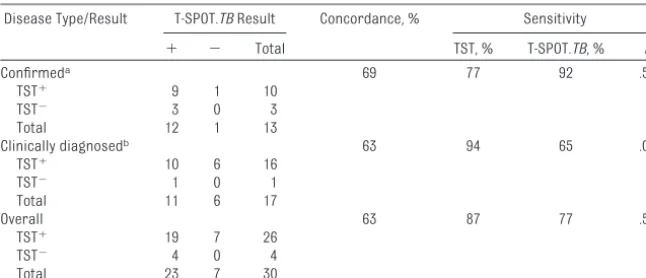Comparing the Tuberculin Skin Test and T-SPOT.TB Blood Test in Children
Full text
Figure




Related documents
This research work focuses on linearly optimized- apodized chirp gratings for intragrating sensing because of its ability to determine non-monotonic physical parameter
An example of this “greater protection” is the use of drug-sniffing dogs. The US Supreme Court has held that a federal officer may use a drug-sniffing dog to check your baggage or
The data’s used for ANN model development are based on actual experimental investigations- effect of 6.9-% oxygen enrichment of 75.3%-75.4% of theoretically required air preheated
High prevalence of knee osteoarthritis, pain, and functional limitations in female soccer players twelve years after anterior cruciate ligament injury.. Roos H, Lauren M, Adalberth
The developed learning books has the advantages in terms of the specificity of the materials that are presented, the proximity of the material presented which
26 The medical records from all previous health care providers should be made available for review for the adoptive parents as soon as possible after placement into an adoptive home
Four formulation (i.e. F1 to F4) Solid and Liquid SEDDS were prepared and evaluated for their micromeritic property, drug content, in-vitro drug release study.. From the
1)“use target language for learning: students and teachers speak, listen, read, write, view, and create in the target language 90% or more during classroom time: comprehensible